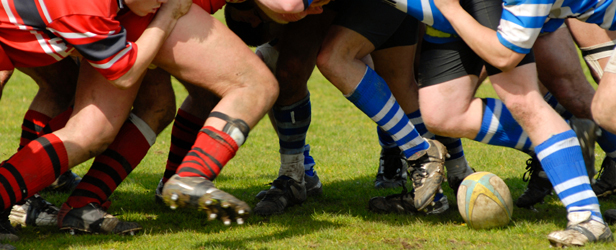
Following the initial 2, 400 meters (1.5 miles), I divide the playing group into two groups based on each athlete's current level of aerobic fitness and the position he plays. I then test the players each week during the first month of the off-season to see where they are physically and to fine tune training plans as the team moves through the off-season training.
This season, after the initial 2, 400-meter time trial, I am using the YoYo Recovery Test. Although this test, developed by Jens Bangsbo, was originally designed for football (soccer), it is very useful in rugby and other team sports that are intermittent, high intensity-based running sports. I am also using the Spingbok Shuttle test, which is a shuttle run test over 30 seconds with a 30-second recovery for six bouts. The cumulative total distance for all six bouts of shuttle running is calculated and scored from this. The test is a series of shuttles back to the start (0), increasing by five meters out and back each time. So, if in the allotted 30 seconds you ran out and back to the five marker but could not get back to the two marker, then you would be scored as 5B2, 5 Back 2, or 135 meters.
Finally, after the team has been running for three weeks, I introduce the RAST: Running Based Anaerobic Sprint Test. This consists of 6 x 35-meter sprints with 10 seconds of rest between each sprint. From this, you can calculate a speed decrement score as well as the maximum and average power outputs. You could, however, also use the Phosphate Decrement test (10 x 40 meters leaving every 30 seconds),which I have often used over the years.
I can use all of this information to then map out how the team will move from the 80/20 physical preparation to rugby specific ratio of the off-season to the 80/20 ratio in reverse for the actual playing season. This will help me plan out the increasing role of rugby in the overall program for the months in between these extremes on the training continuum.
As I mentioned earlier, the group is broken into two groups: a speed group and a metabolic group. We will use many rugby-specific conditioning games with the ball as well as the specific session listed here. Please remember that these are actually snapshots of what we do, and the session content will change each week depending on fatigue levels and volume calculations of the distances run in the rugby sessions that precede the physical component.
With my speed programming, I like and advise others to reverse periodize. For instance, start with short distance sprints that players can complete with no technical breakdown. Then, increase the distance by varying amounts each week to ensure that players maintain excellent running form whilst trying to run faster. Different positions will run different distances and from different starts (e.g., rolling, off the ground, static, back pedaling, lateral moving) to ensure we are covering all the basic movements patterns in the game.
In conclusion, no man is an island, and I would like to say that I have used many people’s ideas when developing this off-season running plan. To them I say thank you as leaders in your field. You inspire me to try to come close to emulating your efforts. Haydyn Masters, Luke Borreginne, Luke Thornley & Nic Gill—an inspiration to us all.










Really appreciate the articles, a lot to take away, which is great! It might be the way I’m viewing the article, but is there a way in which I can see your off-season running plan or a version of it?
Many thanks